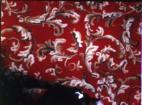Now Available: 20 Exhibition Files from Janie Geiser
Posted November 18th, 2020 in Announcements, New Acquisitions, New Digital Files, New Films, News / Events
Canyon Cinema is pleased to announce the arrival of 20 exhibition files from longtime member Janie Geiser! Geiser is an internationally recognized visual/theater artist and experimental filmmaker, whose work is known for its investigation of the emotional power of inanimate objects, its sense of mystery, and its strength of design.
Included amongst this new acquisition are digital files for eight films that were previously available from Canyon on 16mm – The Red Book (1994), The Secret Story (1996), Immer Zu (1997), Lost Motion (1999), The Fourth Watch (2000), Spiral Vessel (2000), Ultima Thule (2002), and Terrace 49 (2004) – as well as the following works that are new to the collection:
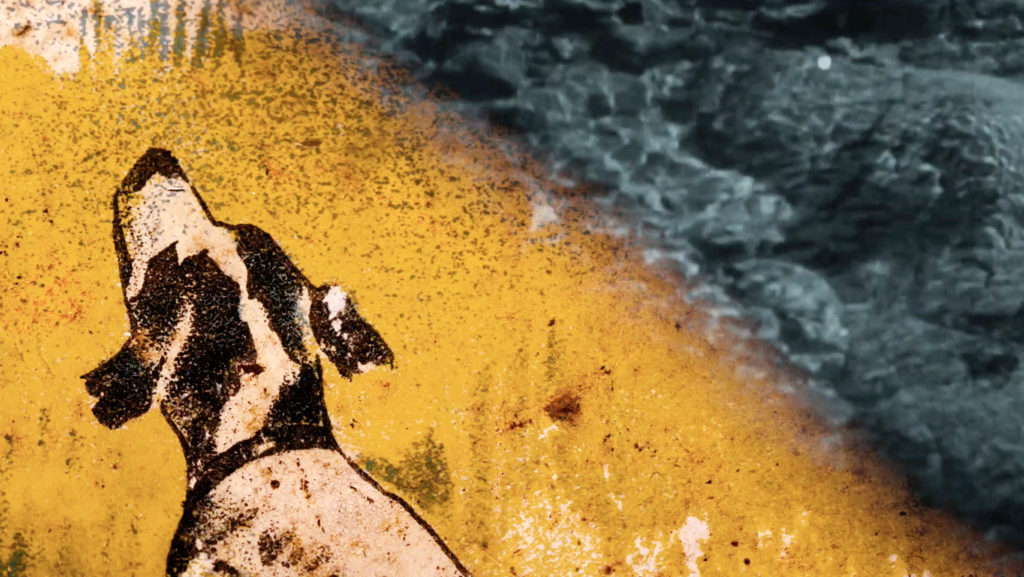
Reverse Shadow (2019, 8 minutes, color, sound)
Rivers run red, planes hover above the water, ships travel in darkness, and towers loom and topple. Disaster seems imminent as the hunters prepare to shoot. The body is a soft target.
I had a recurring dream that I was walking in the woods and a hunter mistook me for a bird. I could hear him moving through the forest. I always woke up before the gun was fired, but that feeling of apprehension would stay with me throughout the day. Lately, even without dreaming this dream, that apprehension is present.
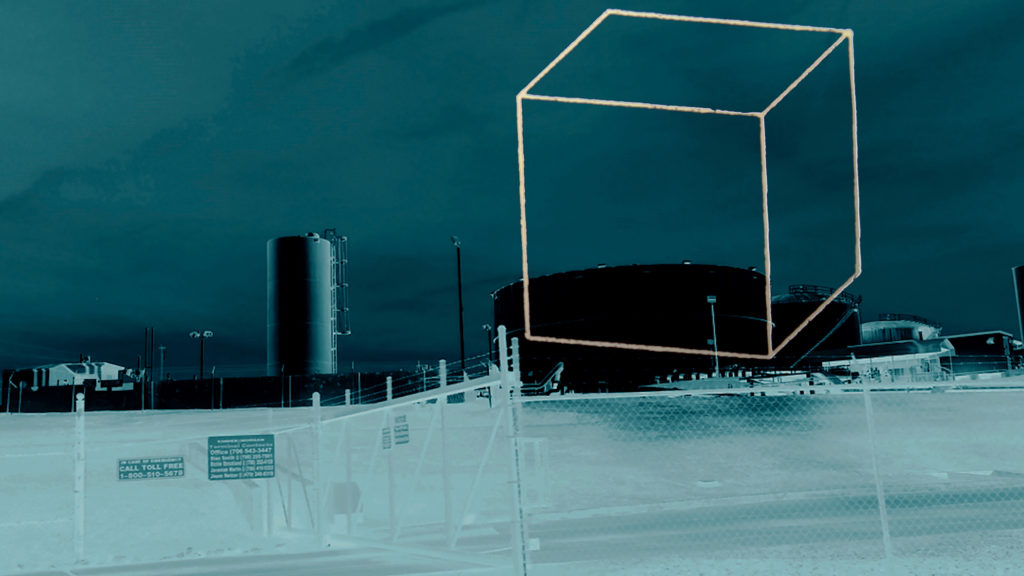
Valeria Street (2018, 11 minutes, color, sound)
“In Valeria Street the American industry, its efficiency and promise, encapsulated as the ‘American way of life,’ emerges as a mirage. The melancholy of such a transformation, the visual degradation or alternation of the image, its shadowing, or haunting, is heightened by the repetition of the father figure-the face, the amplified male hands, a displacement and disfiguration of the sturdy, authorial body. The partly mournful configuration is offset by the sheer playfulness and multiplicity of the compositions.” – Ela Bittencourt, “Janie Geiser and Ericka Beckman in Projections,” Lyssaria (2018)
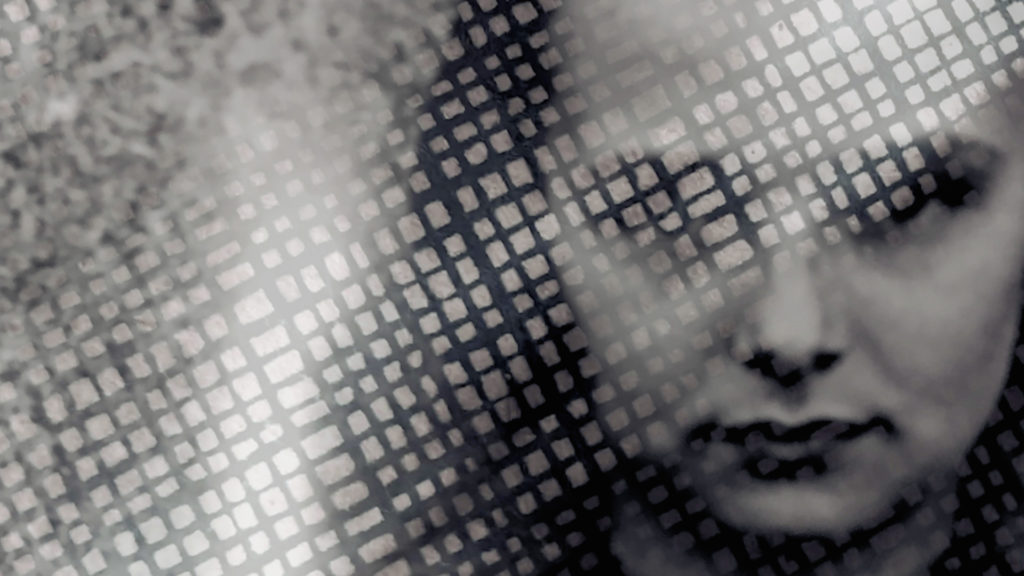
Fluorescent Girl (2018, 2 minutes, color, sound)
Fluorescent light reflects on a girl’s image, found in a book of photographs in a bookstore. She merges with other images of shadow and light, highlighting her ephemerality and ours.
The photograph, Tailor’s Apprentice (1953), is by Paul Strand.

Look and Learn (2017, 11 minutes, color, sound)
Look and Learn excavates the visual vocabulary we use to operate and construct the daily world. Look and Learn explores the juxtaposition of two material image forms: visual instructions (assembly guides, photography manuals, maps, diagrams) and photographs – mainly a set of several 1950’s era elementary school group photographs. The visual instructions mimic maps in their hope of directing us to something, or somewhere, perhaps to a better understanding of our world and how things work.

Flowers of the Sky (2016, 9 minutes, color, sound)
Flowers of the Sky (a medieval term for comets) draws on two panoramic photographs, found in a Los Angeles thrift shop, that depict a gathering of members of the Eastern Star, a Masonic order. In the first photograph, taken at a banquet meal, the participants are seated at tables and facing the camera. In the second photograph, everyone is dressed in ritual robes, looking away from the camera and toward a stage. A single figure stands there, centered on this platform, and faces them. Everyone is suspended, expectant.
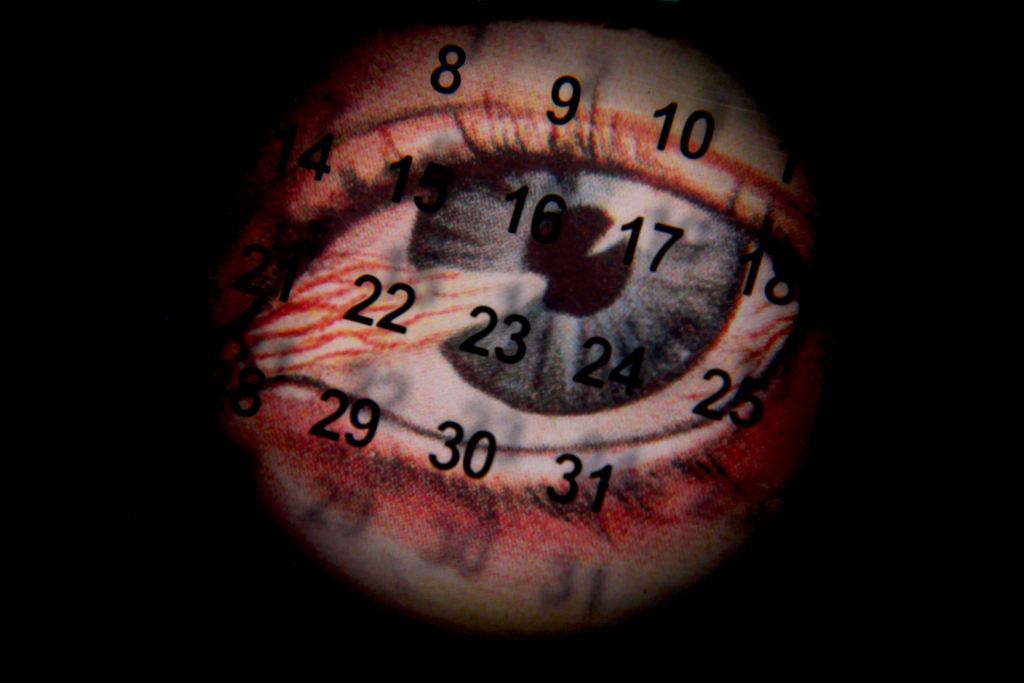
Silent Sister (2016, 6 minutes, color, sound)
An elliptical meditation on the body, illness, landscape, and time. In Silent Sister, the body is turned inside-out, invaded, examined. Using medical illustrations, charts, photographs of abandoned hospitals, miniatures, and photographs of pre-suburban Los Angeles (which was a haven for the chronically ill), Silent Sister centers on the intersection of landscape and the body; both become the location of narrative, memory, erasure, history, and loss.

Cathode Garden (2015, 8 minutes, color, sound)
A young woman moves between light and dark, life and death; a latter day Persephone. The natural world responds accordingly. Neglected negatives, abandoned envelops, botanical and anatomical illustrations, and found home-made recordings re-order themselves, collapsing and re-emerging in her liminal world.
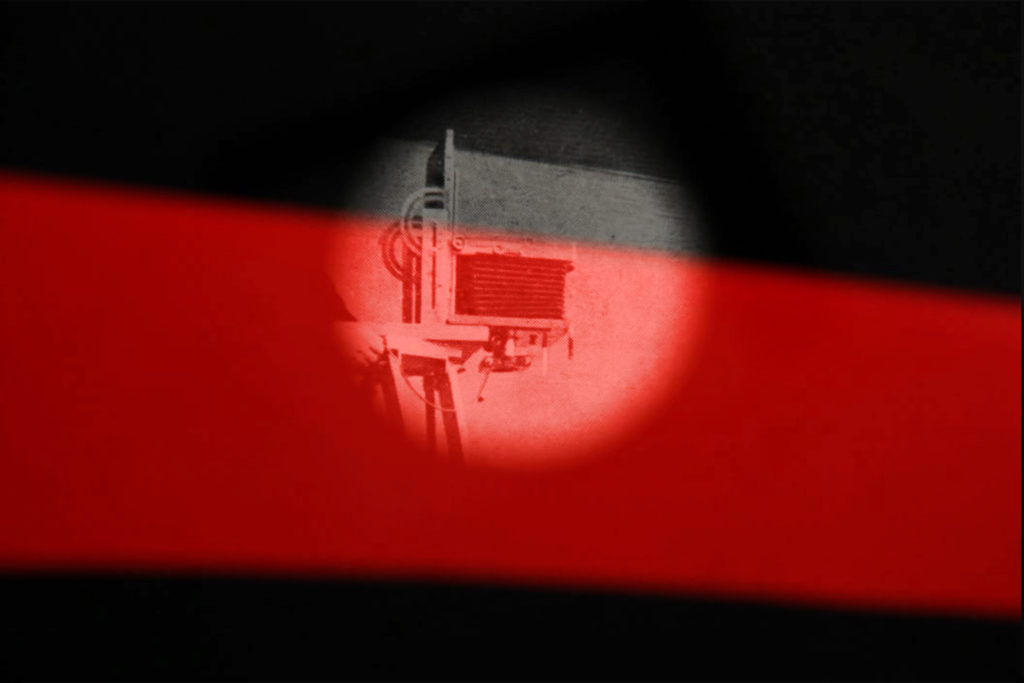
Kriminalistik (2013, 5 minutes, color, sound)
From the found book pages of an early twentieth century German book on forensics, Geiser uncovers hidden narratives. Evidence is scientifically arranged and catalogued, suggesting a corridor to knowledge. Elusive. Crimson.
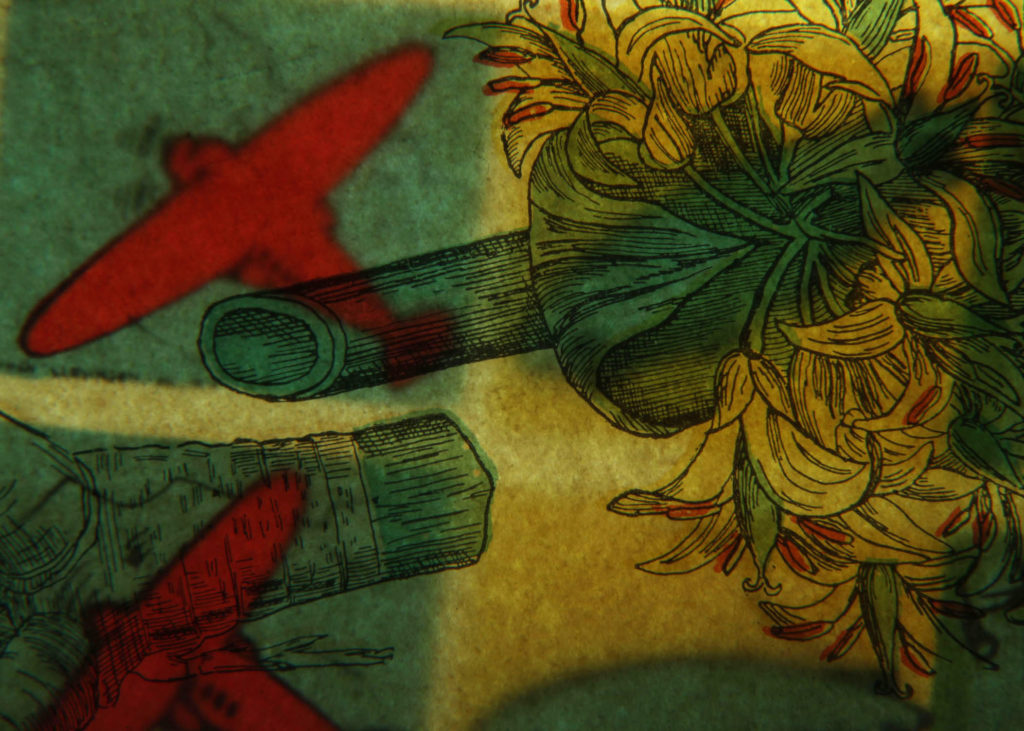
Ricky (2011, 11 minutes, color, sound)
The realms of childhood, war, and loss echo through Ricky. Double vision illuminates, and simultaneously obfuscates, what can be remembered, lost, or retrieved. A found sound recording forms the spine of the film…a scratched audio letter from father to son.
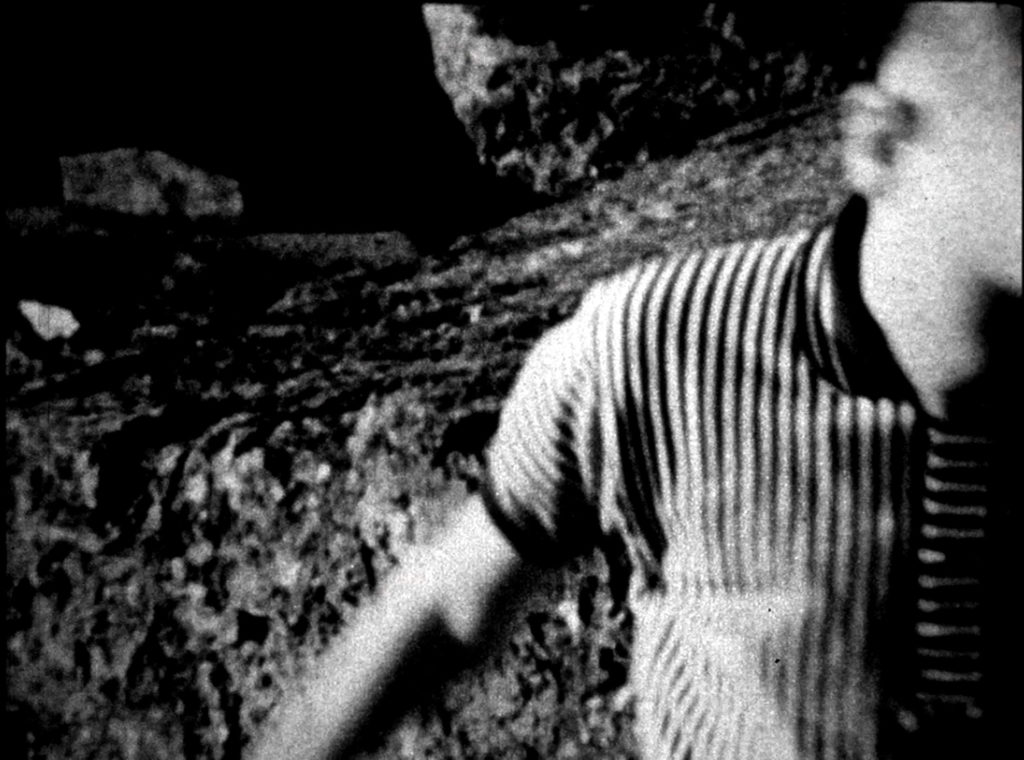
Kindless Villain (2010, 5 minutes, b&w, sound)
In Kindless Villain, two boys wander through a stone fortress, while the history of never-ending battle forms traces in the waters below. Seemingly alone in their island world, the boys succumb to fatigue, and to rituals of power. Scratched phrases from an ancient recording of Hamlet reveal a sad cry for vengeance. War is a child’s game, played quietly in this forgotten world.

The Floor of the World (2010, 9 minutes, color sound)
In a shifting landscape of dirt and sky, excavation and construction merge. Figures move back and forth between life and death, and possibly somewhere else. The ephemerality of existence is a mundane question in this world, where numbers mark the way. The floor of the world turns out to be easily pierced, liquid, permeable.

Ghost Algebra (2009, 7.5 minutes, color, sound)
Under erratic skies, a solitary figure navigates a landscape of constructed nature and broken bones. She peers through a decaying aperture, waiting and watching: the fragility of the body is exposed for what it is: ephemeral, liquid, a battlefield of nervous dreams.


